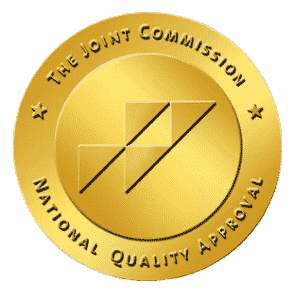Yoga has many physical, mental and spiritual benefits. Yoga helps manage stress, anxiety and depression, and because anxiety and depression are two mental health disorders that commonly occur in tandem with addiction, it comes as no surprise that yoga can be beneficial in drug addiction recovery. Used along with other traditional, evidence-based treatment, yoga is a useful tool to help individuals overcome drug addiction. Because drug addiction, one kind of substance use disorder, affects a person cognitively, physically, behaviorally, and psychologically, studies suggest yoga is an effective tool in recovery because it is a holistic intervention. Focus on the whole person is essential to achieve and maintain recovery. At Rise in Malibu, we recognize the value of yoga in recovery and integrate it into our treatment method.
What Is Yoga?
Yoga is a mind-body practice originating from India. Yoga uses physical postures to connect the mind, body and breath in order to gain self-awareness, as well as improve control of the mind and body. Yoga has been proven to reduce stress and anxiety and improve physical and mental health. Some potential benefits of yoga include increased physical strength, increased stamina, self-reflection, improved sleep, increased energy levels, emotional healing, and a boosted immune system. Yoga doesn’t require a special location or special equipment, so individuals can practice yoga whenever, wherever.
Different Types of Yoga
There are several different types of yoga, each offering its own specific focus. Understanding the differences between different types of yoga practices is important in choosing which type of yoga is right for you.
- Vinyasa yoga—Also known as “flow yoga,” vinyasa yoga is a style of yoga where the poses are synchronized with the breath. Vinyasas is one of the more athletic and most common styles of yoga and is perfect for both beginners and yoga veterans.
- Hatha yoga—is a catch-all term for the physical poses of yoga. Hatha yoga is a great starting point for beginners to get a gentle introduction to basic postures and breathing exercises.
- Bikram yoga—Also known as “hot yoga,” bikram yoga takes place in a sauna-like room typically heated to 105 degrees with 40 percent humidity. Bikram yoga consists of 26 postures and two breathing exercises. Practicing yoga in a heated environment allows students to get deeper into poses and is enjoyed by those who don’t mind sweating or want a more physical practice.
- Ashtanga yoga—Focuses on six series of specific poses taught in order that rapidly link every movement to breath. Ashtanga yoga can be physically demanding and is better for non-beginners.
- Iyengar yoga—Focuses on alignment and precision with movements. In Iyengar yoga poses are held for a long time while focusing on the breath. It is generally less intense than other styles of yoga and utilizes props to perfectly adjust postures to the individuals, making it an ideal yoga style for those who want to work slowly and methodically or those who have injuries.
- Kundalini yoga—Is equally spiritual and physical and aimed at releasing pent up energy. Because kundalini yoga is spiritual and physical, it uses fast-moving poses with breadth exercises and often involves chanting and meditation, as well as mantras, which is setting an intention or focus. This style is ideal for those interested in a physical, yet spiritual practice.
- Power yoga—Is the most active and quickly paced yoga style and it can be done in a heated or regular temperature environment. Power yoga is based on the traditional ashtanga system, but it is one of the least spiritual styles of yoga.
- Yin yoga—Uses more passive poses that focus on release of tension in joints. Yin yoga is a quiet and meditative style of yoga that is great for beginners or those looking to recover from more active yoga classes.
- Restorative yoga—Focuses on bodily relaxation, meditation and stress relief. In a restorative yoga class, students only go through four or five poses in order to sink into deep relaxation without exerting too much effort.
How Is Yoga Used in Addiction Recovery?
Yoga has been proven to relieve and reduce stress in several ways. It helps modulate the stress response during practice by lowering heart rate and blood pressure. Yoga also helps regulate the adrenal glands to lower levels of stress hormones like cortisol and adrenaline. There is research that suggests that yoga strengthens the stress-controlling regions of the brain and increases gamma-aminobutyric acid (GABA), which helps the brain manage anxiety and stress responses. Because stress, anxiety and depression are common side effects of drug withdrawal, yoga is an effective tool to help manage and improve these symptoms.
In addition, yoga’s ability to create self-awareness can help individuals take ownership of their addiction and actions to regain the self-control and self-confidence crucial to recovery. The physical benefits of yoga are also helpful to those in addiction recovery, as it increases energy levels, improves quality of sleep, and prompts healthy habits. Yoga also offers spiritual connection through breathing techniques and mindful meditation that can complement other spiritual work done in treatment like a 12-Step program.
Recover With Yoga at Rise in Malibu
At Rise in Malibu, we use clinical, traditional, holistic and medical methods in treatment to promote lasting recovery. Our program integrates yoga as part of our full-continuum of care. If you’re interested in learning more about our individualized treatment using evidence-based therapies, please contact us today to speak with one of our knowledgeable team members.







